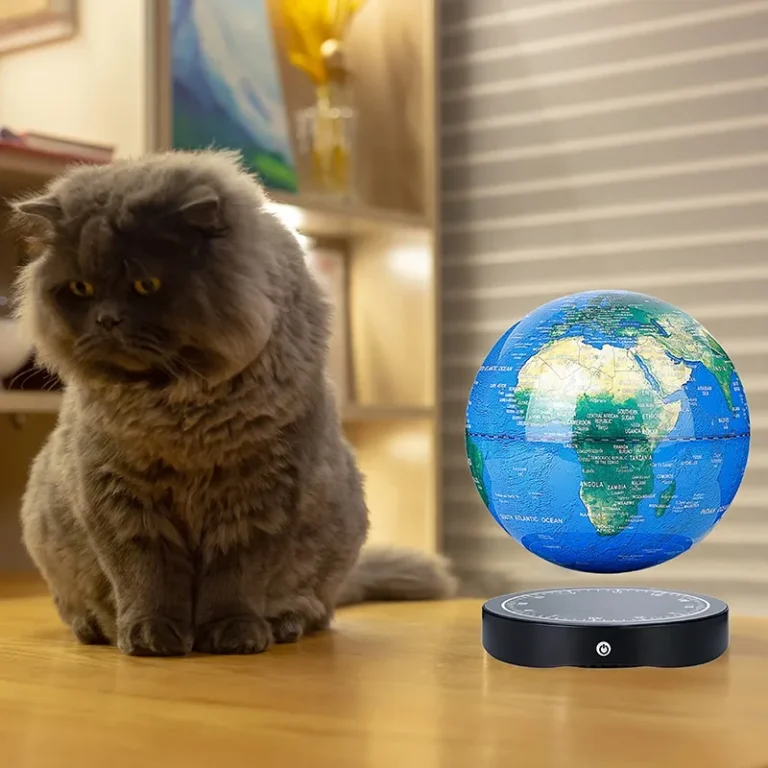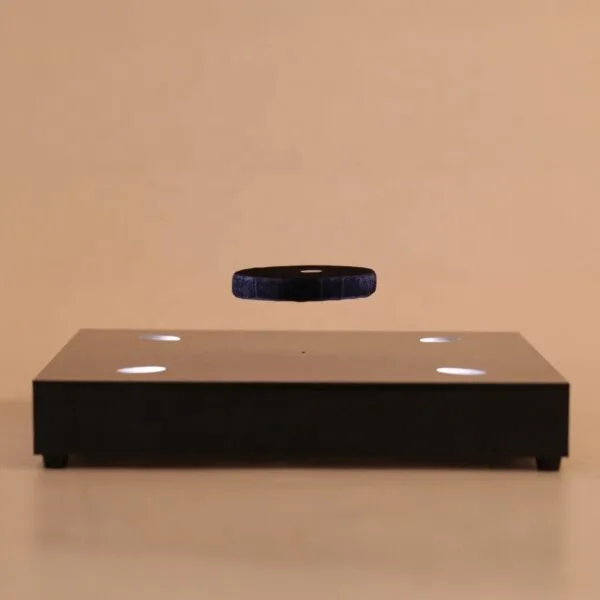자기 부상 기술이 우리의 가정과 사무실을 어떻게 변화시키고 있습니까?

Imagine stepping into your building and seeing an elevator glide soundlessly between floors, no cables or pulleys in sight. That’s not science fiction. Maglev technology is making this a reality in more homes and offices every year. You get more space, safer rides, and a cleaner environment. The market for maglev elevators is growing fast:
Market value hit about USD 35.5 million in 2023.
Experts expect it to reach USD 2.5 10억 2024 and USD 4.8 billion by 2033.
Annual growth could be as high as 11.5% through 2030.
You can already see how maglev is changing the way you live and work.
주요 시사점
Maglev technology uses powerful magnets to lift and move objects, eliminating friction and providing smoother, quieter rides.
Maglev elevators save space by allowing multiple cabins to operate in one shaft, increasing usable area by up to 25%.
Maglev systems require less maintenance and energy, leading to lower operational costs and a smaller carbon footprint.
Smart homes will benefit from maglev technology, enabling seamless control of doors, windows, and appliances through smart devices.
As maglev technology advances, it will reshape urban infrastructure, making cities cleaner, 더 안전한, 그리고 더 효율적.
Maglev Technology Overview

What Is Magnetic Levitation
You might wonder how maglev technology actually works. Magnetic levitation lets objects float above a surface using powerful magnets. You do not see any wheels or tracks touching each other. Instead, magnets push and pull to lift and move things. This is why maglev feels so smooth and quiet.
Different types of magnets can create lift. You might see permanent magnets, 전자석, or even superconducting magnets in action.
그만큼 main challenge is to make enough force to lift heavy objects and keep them steady. If the system is not stable, things could slide or tip over.
Scientists discovered that you cannot get stable levitation with just static paramagnetic materials. They had to find clever ways to keep things floating safely.
When you step into a maglev elevator or see a high-speed train, you are seeing magnetic levitation at work. It is not just for science labs anymore!
주요 특징
Maglev technology brings some cool features to your home or office. You get a system that feels futuristic and works better than old mechanical setups.
Maglev systems do not have parts that touch, so you do not deal with friction or wear and tear. This means less maintenance for you.
Traditional systems need lots of repairs because their parts rub together and break down over time.
Maglev works well in all kinds of weather. Snow, ice, or rain will not slow it down.
You save money on operations since maglev uses less energy and has lower running costs, even though it needs special equipment and careful setup.
Maglev can speed up and slow down faster than regular systems. You get a smoother and quicker ride.
팁: Because maglev has no rolling resistance, it is more energy-efficient and reliable than traditional systems.
With maglev, you enjoy a cleaner, 더 조용합니다, and more efficient way to move around your building.
Maglev in Homes

Elevators
You might think of an elevator as a big box that moves up and down with cables. Now, magnetic levitation changes everything. When you use a maglev elevator system, you get a ride that feels smooth and quiet. The MULTI elevator system is a great example. It uses magnetic levitation to move cabins not just up and down, but also sideways. You can fit more elevators in the same space because the elevator system needs smaller shafts. This can reduce the footprint by up to 25%. You get more room for living or working. You also wait less because several cabins can run in one shaft. That means you spend less time waiting and more time doing what you want.
팁: Maglev elevator systems give you more design choices. You can place elevators almost anywhere in your building.
Doors and Windows
You may not notice it, but magnetic levitation is making doors and windows smarter and easier to use. These panels glide on a floating system, so you do not hear the noise from old sliding tracks. You can move large glass doors with just a gentle push. There is almost no friction, so you use less effort. The frames look slim and modern, letting in more light. You also save on maintenance because there are fewer moving parts. Maglev-powered doors and windows work well with smart home systems. You can open or close them with your phone or voice. They also help you save energy because they do not need power all the time to stay open or closed.
Smooth, easy movement
Less wear and tear
Slim, modern frames
Easy smart home integration
Great for large openings
Appliances
You might see magnetic levitation in some home appliances soon. Imagine a fan that floats and spins without touching anything. It runs quietly and lasts longer because there is no friction. Some kitchen gadgets may use this tech to make your life easier and your home more efficient. As maglev spreads, you will see more appliances that use less energy and need less care.
Maglev in Offices
Vertical Transport
You see changes in office buildings every day. Magnetic levitation is making elevator rides smoother and faster. You step into an elevator and feel it glide between floors without jerks or noise. Offices use magnetic levitation to move people quickly, even in tall towers. You do not wait long for an elevator. Multiple cabins can run in one shaft, so you get to your floor faster. You notice less crowding in the lobby. The elevator system also uses less space, so your office has more room for meeting areas or break rooms.
팁: Magnetic levitation elevators work well in busy offices. You spend less time waiting and more time working.
Automated Entry
You walk up to a door, and it opens without a sound. Magnetic levitation powers these automated doors. You do not push or pull. The door glides open with a gentle motion. Offices use these doors to make entry easy for everyone. You see fewer moving parts, so the doors last longer. You enjoy a quiet workspace because the doors do not squeak or slam. Magnetic levitation also helps with security. You can control doors with a card or phone, so only the right people get in.
Silent operation
Smooth movement
Easy access for all
Better security
Flexible Spaces
You want your office to change as your team grows. Magnetic levitation makes it possible. Walls and partitions move with ease. You slide a wall to create a new meeting room. You open up space for a big event. Magnetic levitation lets you reconfigure your office without heavy lifting. You save time and effort. Your workspace feels modern and flexible. You can adapt to new projects or team sizes quickly.
혜택 | How It Helps You |
|---|---|
Space-saving | More room for work |
Quiet operation | Less distraction |
Easy movement | Quick changes |
You see maglev technology shaping the future of offices. You get more comfort, speed, and flexibility every day.
Benefits of Maglev Technology
Space Efficiency
You want more usable space in your home or office. Maglev technology helps you get it. When you use maglev elevators, you do not need big shafts with heavy cables and counterweights. This change means you can fit more rooms, 부엌, or living areas in the same building.
Multiple elevator cars can run in the same shaft, so you need fewer shafts overall.
Smaller shafts mean you can increase your building’s usable area by up to 25%.
Lighter elevator systems, like the ones from ThyssenKrupp, make buildings faster and more efficient.
The new design lets you use more of your floor space for things that matter to you.
You see this benefit most in high-rise buildings. More space means more value and more comfort.
Safety
You care about safety at home and at work. Maglev technology gives you peace of mind. With no cables or pulleys, there is less risk of mechanical failure. The system uses strong magnets to move things smoothly and safely.
You do not have to worry about cables snapping or parts wearing out.
The ride feels steady, with fewer sudden stops or jerks.
Maglev doors and windows close softly, so you avoid pinched fingers or slamming accidents.
You get a safer environment for your family, coworkers, and visitors.
Energy Savings
You want to save money on your energy bills. Maglev technology helps you do that. It uses less energy than many traditional systems. 예를 들어, maglev air conditioners and HVAC systems run more efficiently and need less maintenance. Businesses and homeowners both see lower utility costs.
Here’s a quick look at how maglev compares to other systems:
System Type | 능률 (kg-km/MJ) | |
|---|---|---|
Maglev | 0.6 | 116 |
Conventional Train | 0.35 | 660 |
Maglev HVAC systems help you cut down on utility costs.
You get quieter operation and less need for repairs.
Many people now choose maglev air conditioners for their energy savings and comfort.
You notice the difference in your monthly bills and enjoy a quieter, cooler space.
Sustainability
You want to live and work in a building that cares for the planet. Maglev technology supports modern sustainability goals. The systems use less energy and create fewer emissions. Some, like the SCMAGLEV system, even aim to use clean energy instead of fossil fuels.
Maglev technology reduces your building’s carbon footprint.
Superconducting magnets make energy use more efficient.
You see better air quality and less pollution.
Many new buildings use maglev to meet green building standards.
메모: When you choose maglev technology, you help create a cleaner, healthier world for everyone.
Challenges
Cost
You might get excited about maglev technology, but the price tag can surprise you. Building maglev systems costs a lot more than traditional options. You pay for special magnets, advanced controls, and expert installation. Many homes and offices find the upfront investment hard to manage. Even though you save money on maintenance and energy later, the first step feels big. 때때로, you need rare-earth materials for the magnets. These materials can be expensive and hard to find. Supply chain issues can make prices go up even more.
메모: As maglev becomes more popular, you may see prices drop. New manufacturing methods and better supply chains could help lower costs in the future.
Technical Barriers
You face some tough technical problems when you want to use maglev in your building. The technology needs special parts and careful setup. You cannot just add maglev to an old building without a lot of work. Here are some common barriers:
You need a big investment to build new maglev systems.
Rare-earth materials are hard to get and can slow down projects.
Safety and security risks must be solved before you can use maglev everywhere.
Political and regulatory rules can delay your plans.
Some companies now design maglev tracks that fit over existing roads. This idea helps you avoid tearing up streets or blocking traffic. You also see new systems that blend with old buildings and even match historical styles.
Integration
You want maglev to work with your current home or office, but it is not always easy. Most buildings were not made for this technology. You often need to change the structure or add new systems. This process takes time and money. 때때로, you run into rules from local governments that slow things down. You also need to think about how maglev will work with your other smart devices.
Some maglev systems now use flexible designs. You can add them to different types of buildings.
New tracks can go over roads, so you do not need to dig or close streets.
Modern maglev can blend with old or new architecture, making it easier to fit into your space.
팁: If you plan ahead and work with experts, you can make maglev a part of your building with less hassle.
Future Trends
Smart Homes
You will see maglev technology become a big part of smart homes. Imagine your doors, windows, and even furniture moving with just a tap on your phone. You can set your windows to open in the morning and close at night, all without making a sound. Maglev-powered appliances will run quietly and last longer because they have fewer moving parts. You will enjoy a home that feels more comfortable and modern. Your smart home will also use less energy, which means lower bills and a smaller carbon footprint.
팁: Maglev systems can connect with your smart devices, making your home even easier to control.
Urban Infrastructure
Cities are changing fast, and maglev technology is leading the way. You will notice new ways to travel and move around town. Here’s how maglev will shape future cities:
Speed and Efficiency: Maglev trains will help you get across the city much faster, saving you time every day.
Sustainability: These trains run on electricity and do not produce direct emissions, so your city will have cleaner air.
Economic Growth: Building maglev systems creates jobs and helps local businesses grow.
Safety: Maglev designs reduce accidents and keep the city’s infrastructure in better shape.
You will see cities become more connected, cleaner, and safer thanks to maglev.
Logistics
Maglev systems will change how goods move in your city. You will get packages and supplies much faster because maglev can move things at 고속. These systems also make less noise and use less energy, so they fit well in busy neighborhoods. You will notice fewer delivery trucks on the road, which means less traffic and cleaner air. Maglev will help stores and companies deliver products quickly and keep shelves stocked. Your city will feel more organized and efficient as maglev becomes part of daily life.
You see maglev technology changing how you live and work. Homes and offices feel smarter, 더 안전한, 그리고 더 효율적. Experts predict maglev will reshape cities, boost commercial zones, and help manage economic changes.
Impact Area | 설명 |
|---|---|
Urban Development | Maglev creates new transit corridors and supports regional growth. |
Sustainability | You use less fossil fuel energy, helping fight climate change. |
Innovative Design | Advanced engineering makes buildings more flexible and functional. |
The future looks bright as research grows and costs drop.
You might pay as little as 5 cents per mile for maglev travel.
Imagine a world where your home and city run cleaner and faster.
Maglev keeps pushing boundaries, so you can expect even more innovation and sustainability ahead.
자주하는 질문
What is maglev technology used for in homes?
You see maglev in elevators, 문, and windows. It helps appliances run quietly and last longer. You get smoother movement and save space. Maglev makes your home feel modern and efficient.
팁: Maglev doors and windows work great with smart home systems!
Is maglev technology safe for everyday use?
You get a safer experience with maglev. There are no cables or pulleys that can break. The system uses strong magnets, so you avoid sudden stops or jerks. You enjoy a steady ride and fewer accidents.
How does maglev help save energy?
Maglev systems use less energy because there is no friction. You spend less on electricity. Appliances and elevators run more efficiently. You help the planet by lowering your carbon footprint.
Maglev Benefit | What You Get |
|---|---|
Less friction | Lower energy use |
Efficient | Smaller bills |
Can you add maglev technology to older buildings?
You can add maglev, but it takes planning. Some systems fit into existing spaces. You might need to change parts of your building. Experts can help you find the best solution for your space.
Will maglev technology become more affordable?
You will see prices drop as more people use maglev. New designs and better materials help lower costs. You may pay less in the future and enjoy more benefits at home or work.





